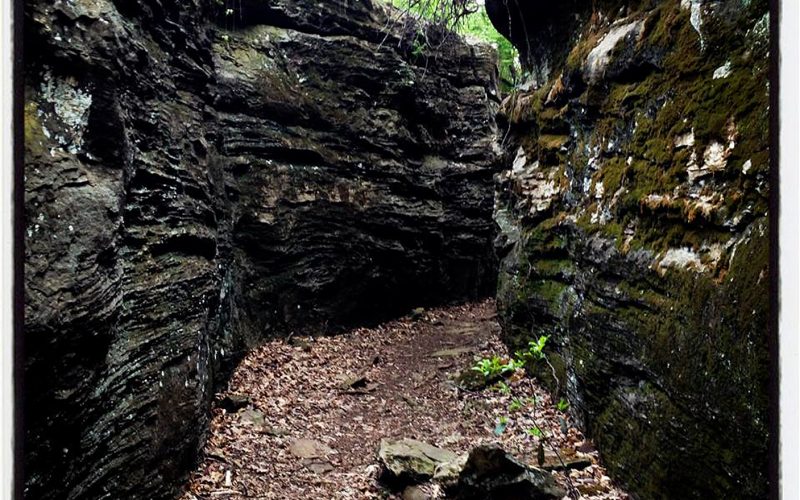
People Making Ripples: Ali Williams of Pack Rat Outdoor Center is passionate about outdoor recreation and the preservation of 387 acres on Mt. Kessler. Along with local small businesses, the Fayetteville Natural Heritage Association, and many supporters, she’s helping organize a Mt. Kessler Trail Run to raise awareness and money to buy the land and protect it forever. The 10k and 20k runs will take place November 2nd beginning at 9:00am at 1725 Smokehouse Road. “Kessler is a hidden gem that has such great potential so close to town,” Ali says. “This is my chance to give back to the community and have another outdoor space to do what I love.” If interested in exploring Mt. Kessler, email Frank Sharp at kesslergreenways@pgpc.com for a waiver form to enjoy access.
By Amanda Bancroft
It takes a mountain to move a trail…or at least, to build one. A nice autumn hike in the woods, unless it’s a bushwhack, was probably made possible by multiple organizations with many hands and equipment. According to Steve Schneider, Vice President of the Ozark Off-Road Cyclists and South Central Regional Director of the International Mountain Biking Association (IMBA) based in Boulder, Colorado, a trail requires collaboration. “For public access trails, land managers are invited to combine efforts with a core group of volunteers from a trail building school and donors of materials, tools and machinery.” These entities then get together to build new trails and maintain them, with several exciting new trails planned for the Northwest Arkansas area.
But can trails be sustainable, or are they just disruptions to the natural world? This is crucial for Ripples to answer to the best of our moral beliefs and technical knowledge, since we’ll be building or maintaining trails for public use and diverse causes such as native species walks and eco therapy programs hosted by non-profits.
Obviously, it’s good to maintain trail etiquette such as Leave No Trace, minimizing our impact on the environment and promoting a positive experience for trail users that come after us. It’s also suggested by some trail leaders, who I tend to agree with as a wildlife observer, that trail ethics include traceless as well as noiseless travel (at least, no obnoxious sounds or yelling). But what about arguments such as Leave It Alone, suggesting that true protection excludes humans from the picture altogether?
Since constant monitoring is impossible, it’s true that some groups can and do use natural areas disrespectfully. But humans are already so disconnected from the outdoors that a toll has been taken on our psychological well-being, knowledge of science, and even performance at work or school. The benefits of experiencing nature, even if just in a photograph, are overwhelmingly documented by teachers and healthcare practitioners, but what are the benefits to nature?
Mainly: recreation equals protection. If it’s preserved for human enjoyment, and all trails are constructed sustainably, then it becomes harder to destroy the area entirely. People are more inclined to fight for the longevity of something they enjoy. Here are IMBA’s 5 Sustainable Trail Principles:
• The Half Rule: A trail’s grade shouldn’t exceed half the grade of the sideslope
• The 10-Percent Average Guideline: Average grade should stay under 10 percent
• Maximum Sustainable Grade: Maximum grade should be 15 percent (except for natural or built rock structures)
• Grade Reversals: Build on the contour and use frequent grade reversals – surf the hillside
• Outslope: Allow water from runoff to flow off the trail rather than pool, and prevent erosion.
Ripples is a 100% solar-hosted website that includes a blog, newspaper column, resources and services for individuals and non-profit organizations. Read more on this topic and others at www.RipplesBlog.org.










